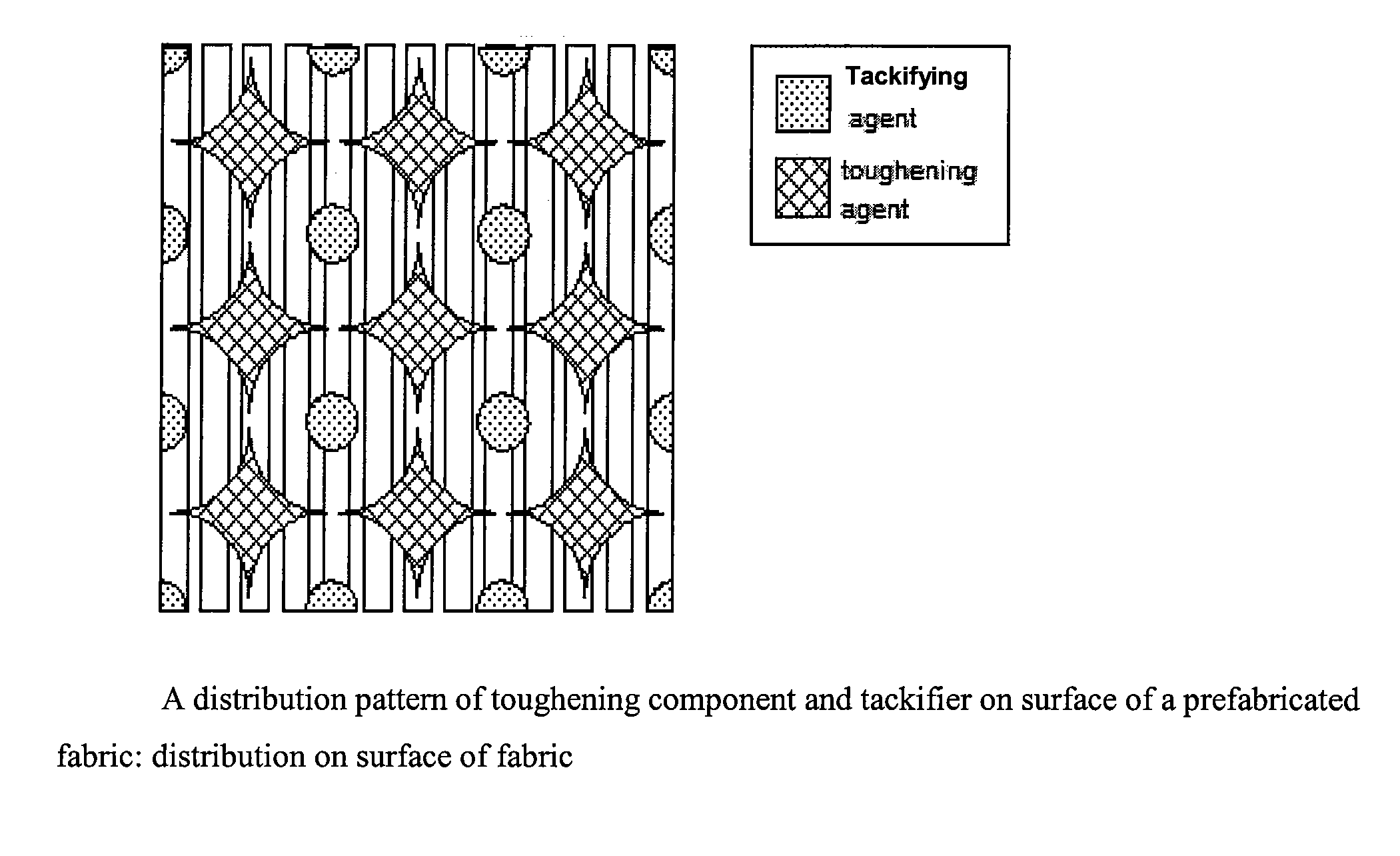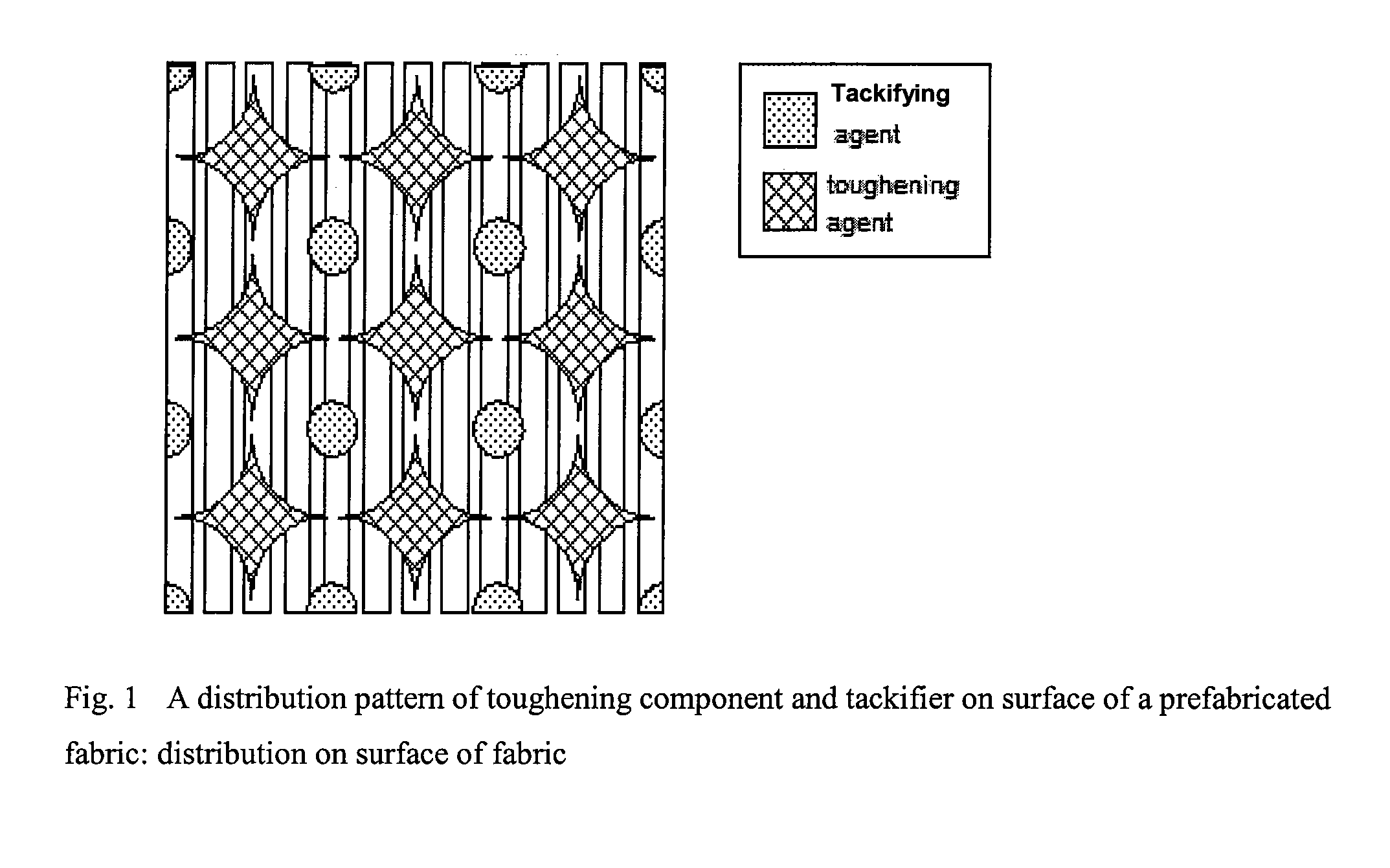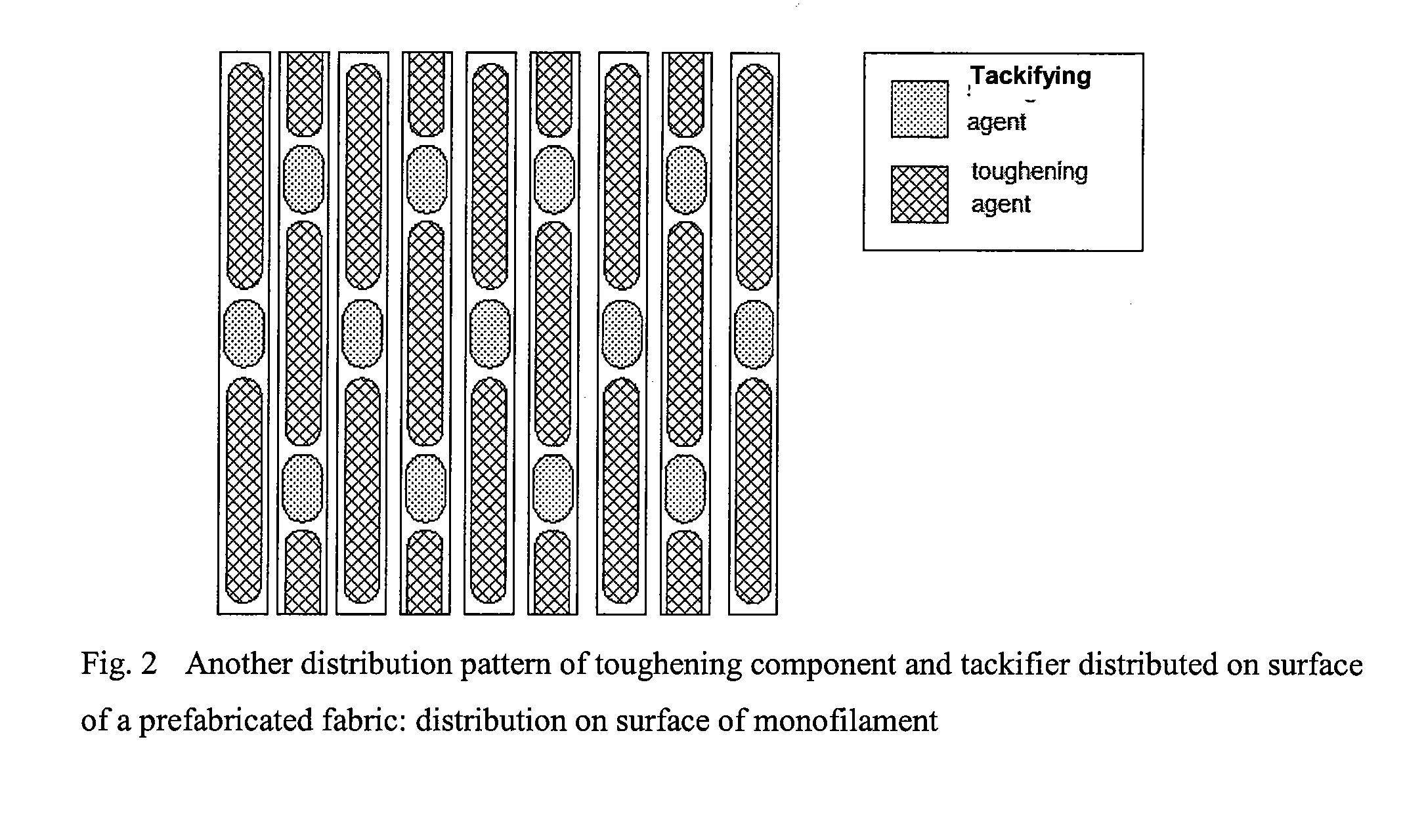Prefabricated Fabric for Liquid Molding Composite Material and Preparation Method Thereof
a liquid molding and fabric technology, applied in the field of composite material manufacturing technology, can solve the problems of reducing the design allowance, affecting the weight relief efficiency of the composite structure, and the low viscosity resin is generally brittle, so as to improve the interlaminar toughness, improve the tackability, and improve the effect of toughness modification
- Summary
- Abstract
- Description
- Claims
- Application Information
AI Technical Summary
Benefits of technology
Problems solved by technology
Method used
Image
Examples
example 1
[0035]Preparation of toughening layer: polyethersulfone (PES) was dissolved in tetrahydrofuran (THF) to obtain a 5% solution. The obtained PES solution was uniformly coated onto a supporting paper by using a film scraper, to form a toughening film after volatilization of the solvent. By adjusting the height of the film scraper, the areal weight of the toughening film was controlled to be 20 g / m2. The toughening film was edged and rolled, to obtain a continuous PES film of about 900 mm in width.
[0036]A SW280 plain glass fabric was laid on a stainless conveying belt, and the PES film was unrolled and adsorbed on upper surface of the glass fabric. The fabric covered with the PES film moved forward, and went through a THF spray device, whereby the PES film was dissolved by THF and closely stuck to the surface of the glass fabric, and then shrank along with volatilization of the solvent, to leave out gaps between adjacent glass filament bundles. After volatilization of the solvent, the f...
example 2
[0039]Preparation of toughening layer: polyetherimide (PEI) resin powder was added to water in which an emulsifying agent and a thickening agent were dissolved, to obtain a slurry having a viscosity of about 10 000 cPoise and a solids content of about 35%. The slurry was coated on a G827 unidirectional carbon fiber fabric by passing through a circular net engraved with a designated pattern on a paste point coating machine, followed by passing through a high temperature oven of 380° C., to make the PEI powder be melt-conglutinated on the surface of the carbon fiber fabric. By designing the pattern of the circular net, the areal weight of the toughening layer was controlled to be 10 g / m2. Thus, a fabric laminated with a toughening layer was obtained. (The pattern of a typical toughening layer was shown in FIG. 3).
[0040]Preparation of tackifying layer: carboxyl-terminated butadiene-acrylonitrile rubber (CTBN) particles and AG80 epoxy resin were mixed in a weight ratio of 5:100, and the...
example 3
[0042]Preparation of toughening-tackifying bifunctional layer: a poly(aryl ether ketone) (PAEK) resin was dissolved in tetrahydrofuran (THF), to obtain a 20% solution. The solution was printed onto a G827 unidirectional carbon fiber fabric by using a gravure printing machine, to form a designated pattern. By designing the depth and figure of the concaves, the areal weight of the toughening layer was controlled to be 15 g / m2. While the PAEK was still in liquid state before complete volatilization of the solvent, CTBN / AG80 tackifier particles were quantitatively spread through a vibrating screen onto the surface of the fabric. After volatilization of the solvent, the tackifier particles adhered to naked fiber surface were removed by a ventilator, while the tackifier particles adhered to the surface of the toughening agent droplets were conglutinated by the PAEK on the fabric. The size of screen mesh and the feeding speed were controlled to make the areal weight of the tackifier be 6% ...
PUM
| Property | Measurement | Unit |
|---|---|---|
| thickness | aaaaa | aaaaa |
| thickness | aaaaa | aaaaa |
| width | aaaaa | aaaaa |
Abstract
Description
Claims
Application Information
 Login to View More
Login to View More - R&D
- Intellectual Property
- Life Sciences
- Materials
- Tech Scout
- Unparalleled Data Quality
- Higher Quality Content
- 60% Fewer Hallucinations
Browse by: Latest US Patents, China's latest patents, Technical Efficacy Thesaurus, Application Domain, Technology Topic, Popular Technical Reports.
© 2025 PatSnap. All rights reserved.Legal|Privacy policy|Modern Slavery Act Transparency Statement|Sitemap|About US| Contact US: help@patsnap.com



